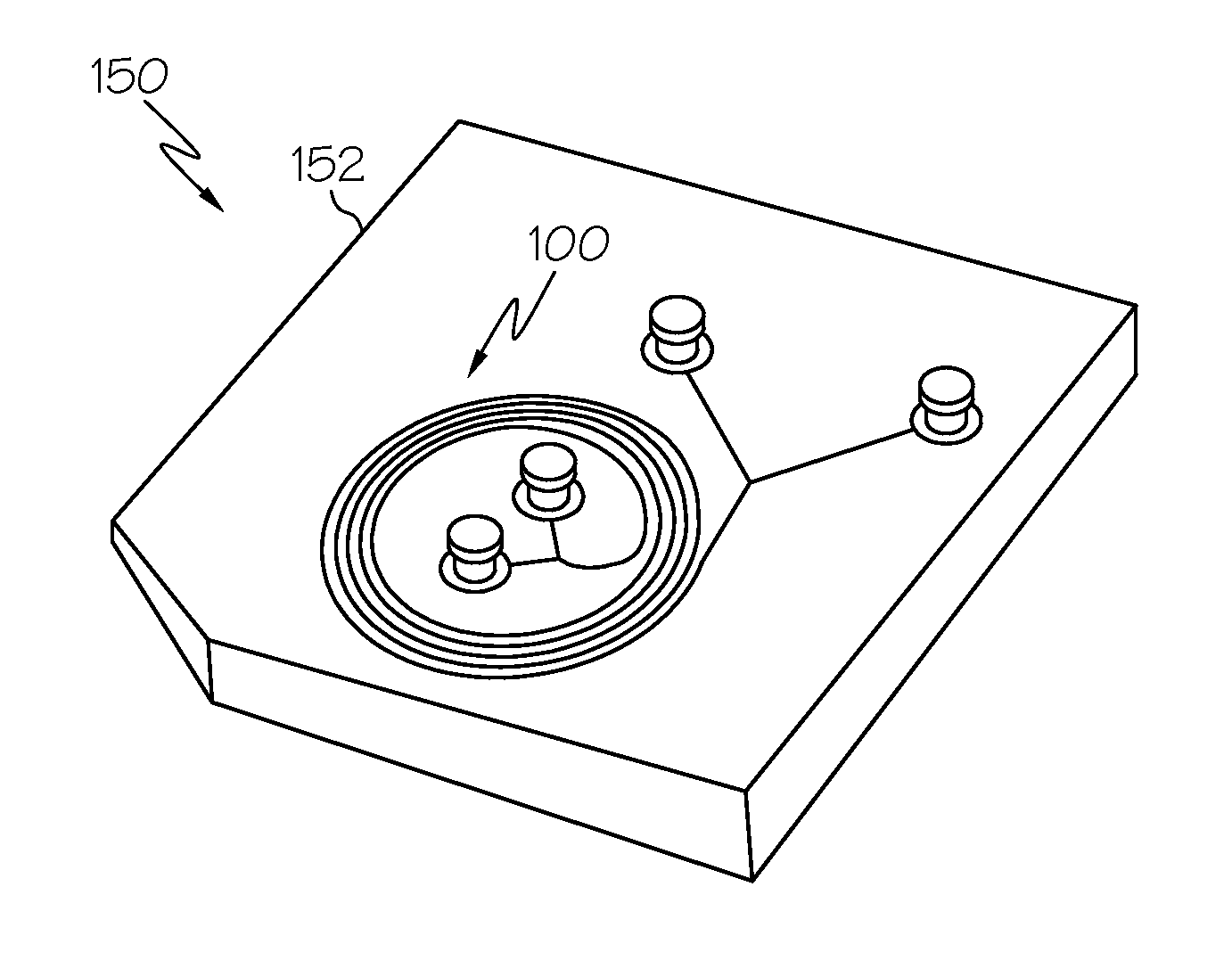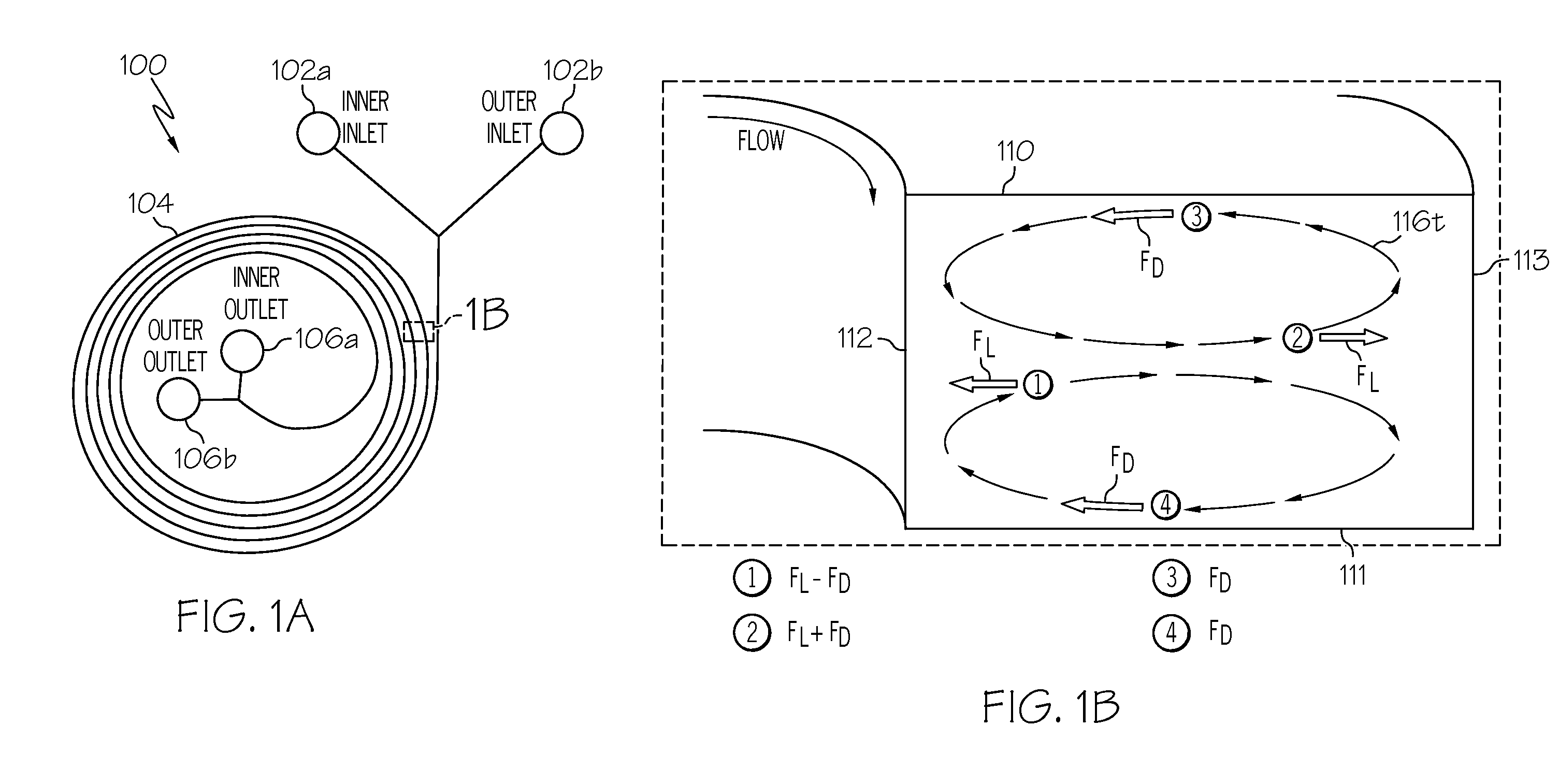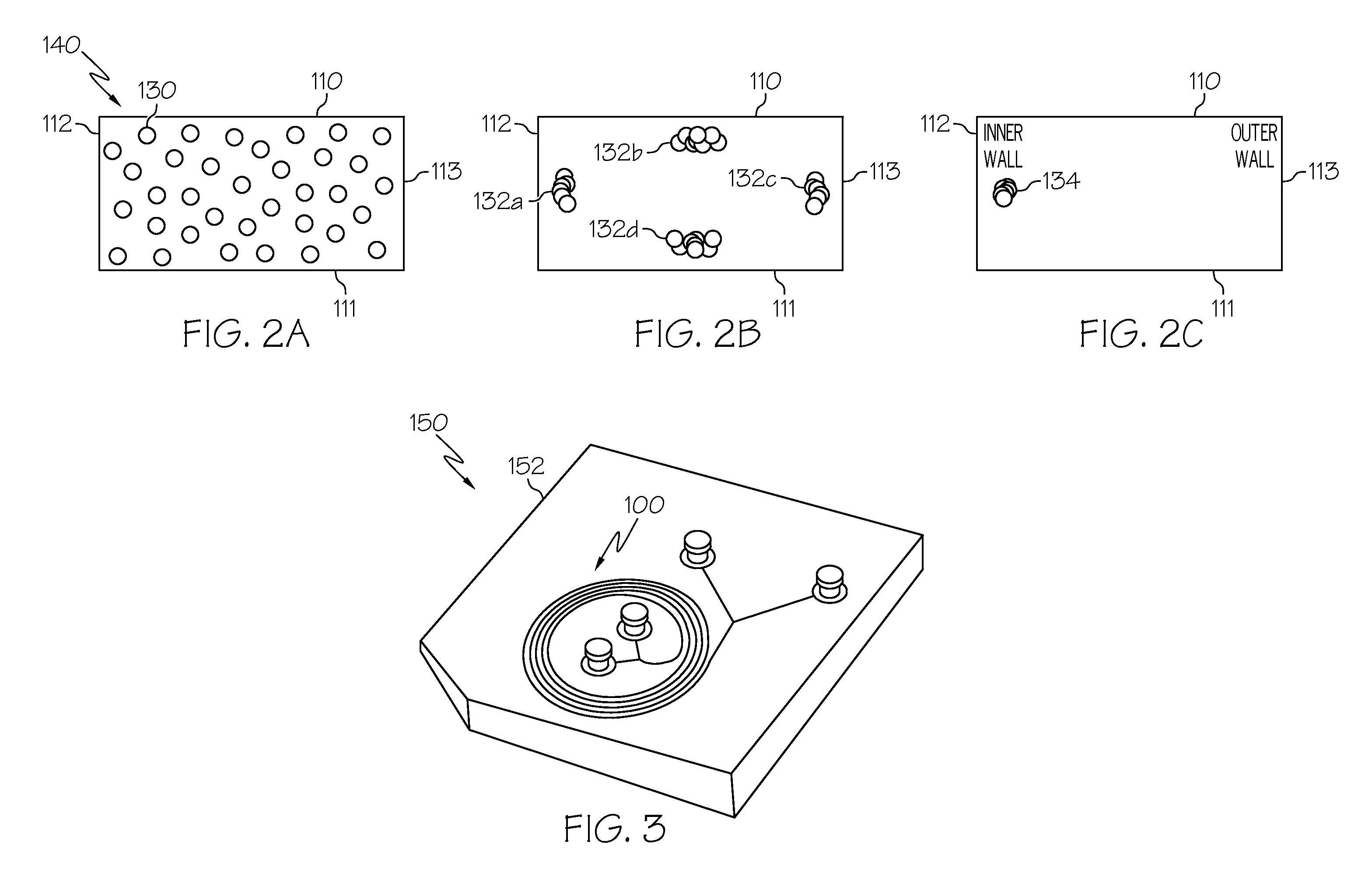Spiral Microchannel Particle Separators, Straight Microchannel Particle Separators, and Continuous Particle Separator and Detector Systems
a technology of spiral microchannel and particle separator, which is applied in the direction of separation process, instruments, laboratory glassware, etc., can solve the problems of high cost, inefficient separation of a wide range of particles, and low detection efficiency, and achieve the effect of reducing the number of microchannels and separating particles
- Summary
- Abstract
- Description
- Claims
- Application Information
AI Technical Summary
Problems solved by technology
Method used
Image
Examples
Embodiment Construction
iments described and illustrated herein;
[0045]FIG. 19B graphically depicts distribution of 780 nm diameter particles across a width of a 10×20 μm2 straight microchannel according to one or more embodiments described and illustrated herein;
[0046]FIG. 20 graphically depicts normalized particle distribution in three outlets of a 1.9 μm and 590 nm particle mixture according to one or more embodiments described and illustrated herein;
[0047]FIG. 21 graphically depicts experimental results of Rep as a function of ap / LC according to one or more embodiments described and illustrated herein;
[0048]FIG. 12 schematically depicts a top view of a straight microchannel particle separator according to one or more embodiments described and illustrated herein;
[0049]FIGS. 23A-23C schematically depict particle streams at an inlet, straight rectangular microchannel, and outlets, respectively according to one or more embodiments described and illustrated herein;
[0050]FIG. 24 graphically depicts distributi...
PUM
| Property | Measurement | Unit |
|---|---|---|
| Time | aaaaa | aaaaa |
| Size | aaaaa | aaaaa |
| Width | aaaaa | aaaaa |
Abstract
Description
Claims
Application Information
 Login to View More
Login to View More - R&D
- Intellectual Property
- Life Sciences
- Materials
- Tech Scout
- Unparalleled Data Quality
- Higher Quality Content
- 60% Fewer Hallucinations
Browse by: Latest US Patents, China's latest patents, Technical Efficacy Thesaurus, Application Domain, Technology Topic, Popular Technical Reports.
© 2025 PatSnap. All rights reserved.Legal|Privacy policy|Modern Slavery Act Transparency Statement|Sitemap|About US| Contact US: help@patsnap.com



